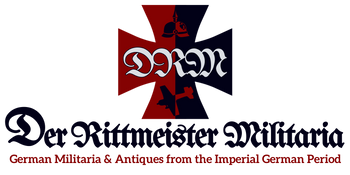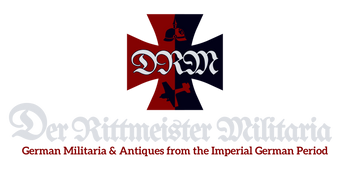World War I: Germany’s Role and Legacy
CLICK HERE FOR ALL PRODUCTS RELATED TO
WORLD WAR I: GERMANYS ROLE AND LEGACY
Overview
- Germany entered World War I as a dominant power within the Central Powers alliance, alongside Austria-Hungary, the Ottoman Empire, and Bulgaria.
- The war began on July 28, 1914, with the assassination of Archduke Franz Ferdinand and ended with the Armistice of November 11, 1918.
- Germany’s defeat led to significant territorial losses, economic hardships, and political upheaval.
Key Phases of the War
-
Opening Phase (1914):
- Schlieffen Plan: Germany’s strategy to quickly defeat France by advancing through neutral Belgium, avoiding a two-front war.
- Resulted in Britain’s entry into the war due to Germany’s violation of Belgian neutrality.
- Ended with the First Battle of the Marne, halting Germany’s advance into France.
-
Trench Warfare and Stalemate (1915–1916):
- The Western Front stabilized into a series of trenches stretching from the North Sea to Switzerland.
- Major Battles:
- Second Battle of Ypres (1915): Introduction of poison gas by German forces.
- Battle of Verdun (1916): One of the longest and bloodiest battles, symbolizing attritional warfare.
- Battle of the Somme (1916): Marked by massive casualties and the introduction of tanks.
-
Expansion of the War (1917):
- Unrestricted Submarine Warfare: Germany’s sinking of ships, including the Lusitania, brought the United States into the war.
- The Zimmermann Telegram further antagonized the U.S., proposing a German-Mexican alliance.
- The Eastern Front saw victories against Russia, culminating in the Treaty of Brest-Litovsk after the Bolshevik Revolution.
-
Final Phase and Defeat (1918):
- Germany launched the Spring Offensive, a last-ditch effort to break the Allied lines before American forces arrived in full strength.
- The offensive failed, and the Allies counterattacked with the Hundred Days Offensive, leading to Germany’s retreat.
- Social unrest at home and military exhaustion forced Germany to seek an armistice.
Key Battles
-
Battle of Tannenberg (1914):
- A decisive German victory on the Eastern Front against Russia.
- Highlighted Germany’s military coordination and strategic prowess.
-
Battle of Verdun (1916):
- A symbol of French resistance and German determination, lasting nearly a year.
- German forces aimed to “bleed France white” but failed to secure a decisive victory.
-
Battle of the Somme (1916):
- Joint British-French offensive to break the German lines.
- The first use of tanks in warfare, though with limited success.
-
Third Battle of Ypres (Passchendaele) (1917):
- Marked by muddy terrain and heavy casualties, illustrating the horrors of trench warfare.
Military Contributions
-
Weapons and Technology:
- Artillery: The backbone of German offensives, including the Big Bertha howitzer.
- Machine Guns: Maxim MG08s dominated defensive positions.
- Gas Warfare: Introduced at Ypres, Germany used chlorine and mustard gas extensively.
- Zeppelins and Aircraft: Used for reconnaissance and bombing, with the Fokker Triplane flown by the "Red Baron" (Manfred von Richthofen).
-
Uniforms and Equipment:
- Pickelhaube Helmets: Iconic spiked helmets worn in the early war, later replaced by the Stahlhelm for better protection.
- Field Gear: Gas masks, trench knives, and mess kits became essential.
- Medals: The Iron Cross was awarded for bravery, becoming a symbol of German military valor.
-
Naval Warfare:
- U-Boats: Revolutionized submarine warfare, disrupting Allied supply lines.
- Battle of Jutland (1916): Germany’s attempt to challenge British naval dominance, ending inconclusively.
Cultural and Social Impact
-
Propaganda:
- Posters and postcards urged citizens to support the war effort, conserve resources, and enlist.
- Slogans like “Gott mit uns” (God with us) reflected the nationalist fervor.
-
Home Front:
- Rationing and shortages led to discontent, especially during the Turnip Winter of 1916–1917.
- Women entered the workforce in large numbers, a significant social shift.
-
Artists and Writers:
- Otto Dix and Ernst Jünger depicted the war’s horrors in art and literature, challenging glorified narratives.
- Soldiers’ poetry reflected the grim reality of trench life.
Collectibles from World War I
-
Military Memorabilia:
- Helmets (Pickelhaube and Stahlhelm), bayonets, and field gear.
- Medals and badges, such as the Iron Cross and Wound Badge.
- Trench art, including shell casings repurposed into decorative items by soldiers.
-
Documents and Maps:
- Letters from the front, official dispatches, and trench maps.
- Propaganda posters and recruitment materials.
-
Uniforms and Insignia:
- Tunics with rank patches, shoulder boards, and regimental buttons.
- Unit flags or pennants.
-
Cultural Artifacts:
- Postcards and photographs from the front lines.
- Items from war charities, such as pins or tokens sold to support veterans.
Display and Storytelling Ideas
- Battle Displays: Create thematic exhibits for major battles like Verdun or the Somme, pairing maps with helmets, medals, and personal letters.
- Trench Life: Showcase trench tools, gas masks, and diaries to illustrate soldiers’ daily hardships.
- Homefront Stories: Include ration books, propaganda posters, and women’s labor memorabilia to highlight the civilian experience.







